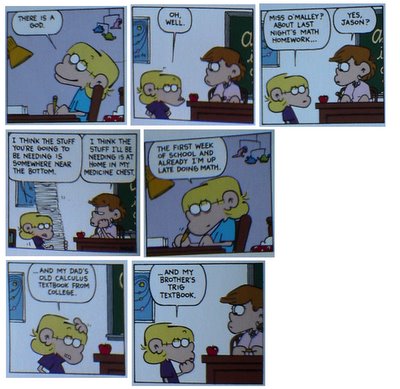i am brain dead
1. Montfort argues that interactive fiction is distinctively different from hypertext fiction, stating:
“There is… nothing in the nature of the lexia or the link, those fundamental elements of hypertext, that allows the reader to type and contribute text or provides the computer with the means to parse or understand natural language. […] Hypertext fiction also does not maintain an intermediate, programmatic representation of the narrative world, as interactive fiction does.”
In terms of understanding how these two forms relate to/differ from narrative, is this distinction significant? Or are they more closely related that Montfort would like to admit? Discuss.
in my opinioin, interactive fiction (in the form of text-based adventure narratives) and hypertext fiction are more closely related than what montfort suggests. it is true that interactive fiction lacks certain components like the lexia or link, but there are close replacements for these. the blocks of narrative in interactive fiction are similar to the lexia and the "links" of interactive fiction come in a different form of jumping from one scene to another via the user's input. moreover, the structures of interactive and hypertext fiction are the same. both constitute blocks of narrative that will be eventually uncovered and linked up by the user. both structures are interestingly volatile, allowing the user to "choose" which parts of the narrative to read first. i put the word "choose" in commas because in both cases you don't really get to choose what you want to see first. there is an element of luck or skill involved to get the more interesting links or type the correct commands.
there is however, more flexibility to the user in hypertext fiction. there is generally no right or wrong answer, and the user doesn't experience a "game over" while in interactive fiction certain commands or procedures of commands must be input from the user else he will face death... i mean virtual death like in the hitchhikers guide to the galaxy. in other types of interactive fiction like photopia, the user simply gets stuck at a particular scene if he doesn't type the correct commands.
2. Espen Aarseth defines cybertext as a perspective on textuality, which considers a work as a textual machine, and sees the reader as having to make a non-trivial effort to traverse the text. Discuss whether Scott McCloud’s “Carl” comic strip can be considered a cybertext.
a property of cybertext is that it gives room for user control. in the case of "carl", though one may initially think that the different paths provides choices for the reader, the eventual case may be so that the user actually explores all the possible endings. thus, it gives an illusion that the user has control over them. however, whether intended or not, the different endings of "carl" somewhat correlates. this further emphasizes that there is no "one ending" and and the user cannot really just choose one path. practically he could, but that story told will be pretty boring. thus, i wouldn't totally consider "carl" to a cybertext.
3. Does a potential narrative such as Paul Fournel’s “The Tree Theatre: A Combinatory Play” satisfy Crawford’s definition of interactivity? Could it be considered an example of interactive media? Why/why not?
paul fournel's "the tree theatre" can be nicely considered to be interactive. crawford's definition of interactivity involves 3 processes: listening, thinking and speaking. these 3 components are satisfied in fournel's play.
listening: both the actors and audience listen to each other. the actors take heed of the audience response to what choices are made and the audience listens to the narrative acted out by the actors.
thinking: this is an internal process. the audience goes through the choices made available to them and decides upon a course of action while the actors takes the input from the audience and decides the corresponding narrative.
speaking: the audience have the power of choice. they communicate their choices to the actors. the actors in turn delivers the narrative to the audience.
but evidently, the interactivity part is more on the audience than for the actors. the actors can be simply viewed as machines that will respond to the audience input, thus carrying out the commands of the audience. this argument may appear superficial as some may argue that the actors may emotionally and intellectually interact with the audience. for instance the actors may perform the scenes with slight disgust if the audience keep making immoral or sadistic choices, like "the king will kill his wife" and "the ending will be unhappy". such interaction is not trivial, but should be observed on the micro-level. the macro-level interaction, which i personally feel is more important, would be that in the progress of the narrative. how both parties are involved and whether the audience is participative will also determine the interactivity of the play.
“There is… nothing in the nature of the lexia or the link, those fundamental elements of hypertext, that allows the reader to type and contribute text or provides the computer with the means to parse or understand natural language. […] Hypertext fiction also does not maintain an intermediate, programmatic representation of the narrative world, as interactive fiction does.”
In terms of understanding how these two forms relate to/differ from narrative, is this distinction significant? Or are they more closely related that Montfort would like to admit? Discuss.
in my opinioin, interactive fiction (in the form of text-based adventure narratives) and hypertext fiction are more closely related than what montfort suggests. it is true that interactive fiction lacks certain components like the lexia or link, but there are close replacements for these. the blocks of narrative in interactive fiction are similar to the lexia and the "links" of interactive fiction come in a different form of jumping from one scene to another via the user's input. moreover, the structures of interactive and hypertext fiction are the same. both constitute blocks of narrative that will be eventually uncovered and linked up by the user. both structures are interestingly volatile, allowing the user to "choose" which parts of the narrative to read first. i put the word "choose" in commas because in both cases you don't really get to choose what you want to see first. there is an element of luck or skill involved to get the more interesting links or type the correct commands.
there is however, more flexibility to the user in hypertext fiction. there is generally no right or wrong answer, and the user doesn't experience a "game over" while in interactive fiction certain commands or procedures of commands must be input from the user else he will face death... i mean virtual death like in the hitchhikers guide to the galaxy. in other types of interactive fiction like photopia, the user simply gets stuck at a particular scene if he doesn't type the correct commands.
2. Espen Aarseth defines cybertext as a perspective on textuality, which considers a work as a textual machine, and sees the reader as having to make a non-trivial effort to traverse the text. Discuss whether Scott McCloud’s “Carl” comic strip can be considered a cybertext.
a property of cybertext is that it gives room for user control. in the case of "carl", though one may initially think that the different paths provides choices for the reader, the eventual case may be so that the user actually explores all the possible endings. thus, it gives an illusion that the user has control over them. however, whether intended or not, the different endings of "carl" somewhat correlates. this further emphasizes that there is no "one ending" and and the user cannot really just choose one path. practically he could, but that story told will be pretty boring. thus, i wouldn't totally consider "carl" to a cybertext.
3. Does a potential narrative such as Paul Fournel’s “The Tree Theatre: A Combinatory Play” satisfy Crawford’s definition of interactivity? Could it be considered an example of interactive media? Why/why not?
paul fournel's "the tree theatre" can be nicely considered to be interactive. crawford's definition of interactivity involves 3 processes: listening, thinking and speaking. these 3 components are satisfied in fournel's play.
listening: both the actors and audience listen to each other. the actors take heed of the audience response to what choices are made and the audience listens to the narrative acted out by the actors.
thinking: this is an internal process. the audience goes through the choices made available to them and decides upon a course of action while the actors takes the input from the audience and decides the corresponding narrative.
speaking: the audience have the power of choice. they communicate their choices to the actors. the actors in turn delivers the narrative to the audience.
but evidently, the interactivity part is more on the audience than for the actors. the actors can be simply viewed as machines that will respond to the audience input, thus carrying out the commands of the audience. this argument may appear superficial as some may argue that the actors may emotionally and intellectually interact with the audience. for instance the actors may perform the scenes with slight disgust if the audience keep making immoral or sadistic choices, like "the king will kill his wife" and "the ending will be unhappy". such interaction is not trivial, but should be observed on the micro-level. the macro-level interaction, which i personally feel is more important, would be that in the progress of the narrative. how both parties are involved and whether the audience is participative will also determine the interactivity of the play.



